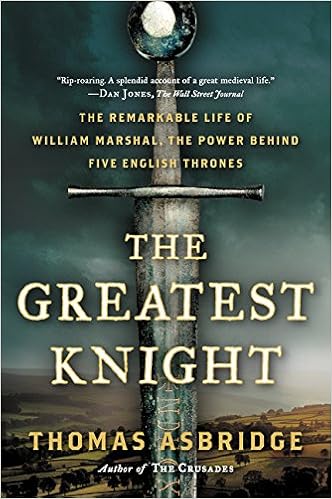
By Robert Hardy
Read or Download Longbow: A Social and Military History PDF
Best Military History books
World War One: History in an Hour
Love heritage? recognize your stuff with background in an Hour. The 'Great War', from July 1914 to November 1918, used to be with out parallel. It delivered to an finish 4 dynasties, ignited revolution, and cast new countries. It brought killing on an extraordinary scale, costing an expected 9 million lives. It used to be the battle that destroyed any concept of romance or chivalry in conflict; it pulled in warring parties from countries around the globe and shattered them, physique and brain.
Writer of such vintage wartime novels as Birdy and A hour of darkness transparent, William Wharton was once probably the most acclaimed writers of his iteration. although, he was once additionally a really inner most man—he wrote lower than a pseudonym and barely gave interviews—so lovers and critics may perhaps basically speculate how a lot of his paintings was once autobiographical and what kind of used to be fiction.
The Greatest Knight: The Remarkable Life of William Marshal, the Power Behind Five English Thrones
A well known pupil brings to existence medieval England’s such a lot celebrated knight, William Marshal—providing an exceptional and intimate view of this age and the mythical warrior classification that formed it. stuck at the incorrect facet of an English civil conflict and condemned via his father to the gallows at age 5, William Marshal defied all odds to develop into one in every of England’s such a lot celebrated knights.
Ian Fleming's Commandos: The Story of the Legendary 30 Assault Unit
In 1941, the uk confronted its darkest hour: it stood by myself opposed to the Germans, who had chased British forces out of France, Norway, and Greece. All it had left have been determined measures--commando raids, intelligence coups, feats of derring-do. this kind of "novel enterprise," wrote Admiral John Godfrey, Director of Naval Intelligence, required "an officer with force and mind's eye of the top order.
Additional info for Longbow: A Social and Military History
T h e Norse king fell, with an arrow via his throat. If there have been archers at Stamford Bridge, why have been they so useless at Hastings, taking pictures down f r o m the hill at William's horsemen and infantry, and William's archers under? T h e r e are solutions, which jointly clarify the tragic lack. First, taking the Anglo-Saxon Chronicle's statement that archery existed yet was once no longer a lot utilized in conflict, including the information that archery helped within the victory within the north, it truly is nearly convinced that archers didn't f o r m a part of the English specialist military. while the levies, the 'fyrd', have been referred to as to the traditional, those who have been expert with the bow, as hunters, b r o u g h t their bows with them and used them in conflict, doubtless kind of good organised into conflict teams and deployed to most sensible virtue. So the archers at Stamford have been levies, not just the n o r t h e r n levies, yet f r o m in every single place relevant a n d southern England. yet is turns out most probably that the n o r t h e r n levies can have provided proportionally extra archers than these f r o m f u r t h e r south; being within the previous Danelaw components they might good have had a better culture of archery than the southerners. it's incontestable that Harold marched with the main power of the world in the back of him, understanding that he needs to smash the northern invasion completely if he was once to not locate himself combating either within the north and south, if, as he feared, William did invade, and there has been each cause to believe he may. Harold risked the n o r t h e r n throw and it succeeded. T h e n he wanted a bit time. H e should have gambled on that point, hoping opposed to h o p e that the early storms may deter Duke William. H e misplaced that throw. King Harold, in York, with an exhausted military licking its wounds, heard on October 1 or 2 of William's touchdown at Pevensey on September 28. He was once again in London among October 7 and eleven, and he drew u p his conflict line on Caldbec Hill on October thirteen. T h e march f r o m York to Batde Hill was once greater than 250 miles. each The longbow into Britain 33 guy who had a mount, horse or pony, Harold south. Few of the levies may have a f f o r d e d ponies, fewer nonetheless of the archer levies, simply because they're prone to were principally composed of these who, abilities aside, couldn't a f f o r d the dearer guns and a r m o u r . T h e r e are thirty abnormal archers proven within the Bayeux Tapestry, which was once embroidered approximately eleven years after the Conquest and, of all of them, just one is horsed and just one wears any protective a r m o u r . this implies that, even in William's invasion strength consisting not just of N o r m a n s yet mercenaries from far and wide north-western Europe, the archers have been drawn f r o m a m o n g these of humble place. Peasant bowmen, whose cattle was once most likely constrained to oxen and donkeys, couldn't in general be anticipated to supply horses for struggle. in order that they didn't come south with their king and their sorely wanted support was once to not be had at the day of the conflict.



